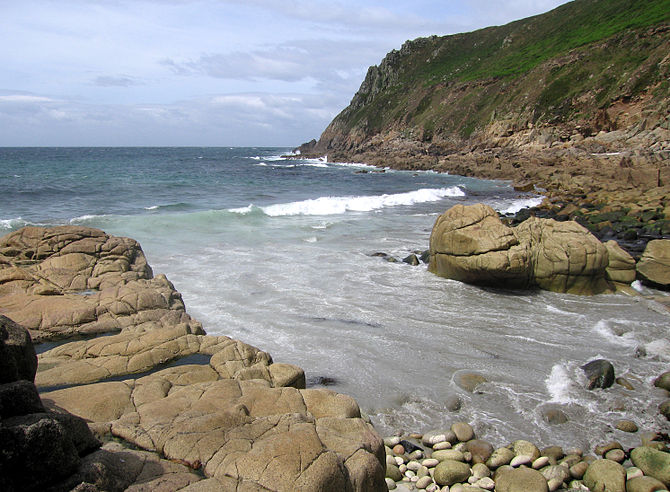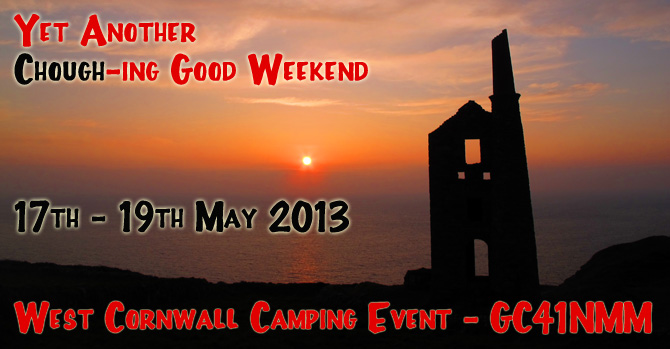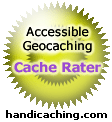Porth Nanven (“port of the rocky valley”), also known as Pornanven, and colloquially as Cot Valley Beach, consists of a sandy beach covered with large rounded boulders. These ovoid boulders have earned Porth Nanven the nickname “Dinosaur Egg Beach”, and are the work of the sea grinding the rocks to a smooth shape over the years.

Photo by Tom Corser www.tomcorser.com.
Licensed under Creative Commons Attribution ShareAlike 2.0 England & Wales (UK) Licence.
The cliff behind the beach also contains ovoid boulders, however these boulders were rounded by the sea and deposited around 120,000 years ago. The cliff consists of two granite layers sandwiching a layer of the boulders kept in place by “head”, a mixture of calcareous sand, granite pebbles and clay which was widely created during glacial periods. The head fills the gaps between the boulders and creates a very strong cement which holds them in place in the cliff.
This “raised beach”, or “marine terrace”, was formed by a drop in sea levels during the last inter-glacial highstand (a period of raised sea levels caused by melting of the ice sheets) – previously the sea would have been much higher, at the level where the raised beach is visible today. During very high spring tides the sea level can sometimes reach the raised beach and wash down some of the boulders.
Porth Nanven is an important and excellent example of quaternary geomorphology. The site is part of the Aire Point to Carrick Du Site of Special Scientific Interest, and is also legally protected by the National Trust – please do not remove any of the boulders from the beach!
In order to log this cache you need to take and upload a photograph of the boulders or cliff and estimate the circumference of the largest ovoid boulder that you can see in the raised beach.
Raised beaches can also be seen around the British Isles on west-facing Atlantic coasts, such as Bude, Widemouth Bay, Crackington Haven, Tintagel, Perranporth and St Ives in Cornwall; Donegal Bay, County Cork and County Kerry in Ireland; the Vale of Glamorgan, Gower peninsula, Pembrokeshire and Cardigan Bay in Wales; the Isle of Jura and Isle of Arran in Scotland; as well as Finistère in Brittany and Galicia in Northern Spain.
They are also to be found in a wide variety of coast and geodynamical backgrounds such as subduction on the pacific coast of South and North America, passive margin of the Atlantic coast of South America, collision context on the Pacific coast of Kamchatka, Papua New Guinea, New Zealand and Japan and passive margin of the South China sea coast.


See ratings for this cache